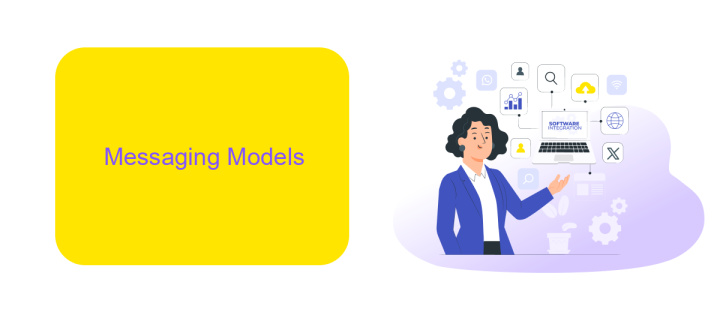Tibco EMS Vs Kafka
When it comes to enterprise messaging systems, Tibco EMS and Apache Kafka stand out as two leading solutions. Both offer robust features for real-time data streaming and message brokering, but they cater to different use cases and architectural needs. This article delves into the key differences between Tibco EMS and Kafka, helping you make an informed decision for your business.
Introduction
In today's fast-paced digital environment, the choice of messaging systems can significantly impact the efficiency and scalability of your applications. Two of the most popular messaging solutions are Tibco EMS and Apache Kafka. Both platforms offer robust features and cater to different use cases, making it essential to understand their strengths and weaknesses to make an informed decision.
- Tibco EMS: Known for its high reliability and enterprise-grade features.
- Apache Kafka: Renowned for its high throughput and scalability.
Choosing the right messaging system depends on your specific requirements and use cases. For instance, Tibco EMS might be ideal for mission-critical applications requiring robust transactional support, while Kafka excels in handling real-time data streams and large-scale data processing. Additionally, services like ApiX-Drive can simplify the integration process, allowing you to seamlessly connect different systems and automate workflows, further enhancing the capabilities of your chosen messaging platform.
Messaging Models

Tibco EMS and Kafka represent two distinct messaging models tailored for different use cases. Tibco EMS follows a traditional message queuing model, where messages are sent to a queue and consumers pull messages from this queue. This model ensures reliable message delivery and is well-suited for applications requiring transactional integrity and guaranteed message processing. Tibco EMS supports both point-to-point and publish-subscribe messaging patterns, offering flexibility in how messages are distributed and consumed.
On the other hand, Kafka employs a distributed streaming model, where messages are published to topics and consumers subscribe to these topics. Kafka's architecture is designed for high-throughput and low-latency message processing, making it ideal for real-time data streaming and large-scale data integration. Kafka's partitioning and replication features enhance its scalability and fault tolerance. For seamless integration and automation of data workflows between these messaging systems and various applications, services like ApiX-Drive can be leveraged. ApiX-Drive simplifies the setup of integrations, allowing for efficient data transfer and synchronization across diverse platforms.
Performance and Scalability

When it comes to performance and scalability, both Tibco EMS and Kafka offer robust solutions, but they cater to different needs. Tibco EMS, being a mature enterprise messaging system, excels in environments where reliability and transactional integrity are paramount. Its performance is optimized for scenarios with moderate message volumes and complex routing requirements.
- Scalability: Tibco EMS can be scaled vertically by adding more resources to the server or horizontally by clustering multiple servers. However, it may require significant configuration and management effort to maintain high availability and performance.
- Performance: Kafka is designed for high throughput and low latency, making it ideal for real-time data streaming applications. It achieves this by partitioning data and distributing it across multiple brokers, allowing for seamless horizontal scaling.
For businesses looking to integrate these messaging systems with other applications and services, tools like ApiX-Drive can be invaluable. ApiX-Drive simplifies the integration process, enabling seamless data flow between Tibco EMS, Kafka, and other platforms, thereby enhancing overall system performance and scalability.
Features and Functionality

Tibco EMS and Kafka are both powerful messaging systems, each with unique features and functionalities that cater to different needs. Tibco EMS is a robust enterprise messaging system known for its reliability and integration capabilities. It supports a wide range of messaging models, including point-to-point and publish/subscribe, making it versatile for various use cases.
On the other hand, Kafka is a distributed streaming platform designed for high-throughput and low-latency messaging. It excels in handling real-time data feeds and large-scale data pipelines. Kafka's architecture is built around the concept of distributed logs, which ensures data durability and fault tolerance.
- Scalability: Kafka is highly scalable, supporting horizontal scaling across numerous nodes.
- Integration: Tibco EMS offers seamless integration with various enterprise applications, often leveraging services like ApiX-Drive for streamlined setup.
- Performance: Kafka provides exceptional performance for real-time analytics and event streaming.
- Reliability: Tibco EMS ensures message delivery with strong transactional support.
In summary, Tibco EMS is ideal for enterprises requiring reliable and integrated messaging solutions, while Kafka is suited for environments demanding high throughput and real-time data processing. Both systems have their strengths, making them valuable in different scenarios.
Use Cases and Recommendations
Tibco EMS is a robust messaging solution ideal for enterprise environments requiring high reliability, transactional capabilities, and secure message delivery. It is particularly suited for financial institutions, telecommunications, and other industries where guaranteed message delivery and adherence to strict compliance standards are paramount. Tibco EMS excels in scenarios demanding complex message routing, high availability, and integration with legacy systems.
Kafka, on the other hand, is a distributed streaming platform designed for high-throughput and low-latency data processing. It is perfect for real-time analytics, monitoring, and event-driven architectures. Kafka is widely used in e-commerce, IoT, and social media platforms where massive amounts of data need to be processed in real-time. For organizations looking to integrate various applications and services seamlessly, tools like ApiX-Drive can be invaluable. ApiX-Drive simplifies the integration process, allowing businesses to connect Kafka with other systems effortlessly, enhancing data flow and operational efficiency.
- Automate the work of an online store or landing
- Empower through integration
- Don't spend money on programmers and integrators
- Save time by automating routine tasks
FAQ
What are the main differences between TIBCO EMS and Apache Kafka?
Which scenarios are best suited for TIBCO EMS?
Which scenarios are best suited for Apache Kafka?
Can TIBCO EMS and Apache Kafka be used together in a single architecture?
How can I simplify the integration and automation of processes involving TIBCO EMS and Apache Kafka?
Apix-Drive will help optimize business processes, save you from a lot of routine tasks and unnecessary costs for automation, attracting additional specialists. Try setting up a free test connection with ApiX-Drive and see for yourself. Now you have to think about where to invest the freed time and money!


